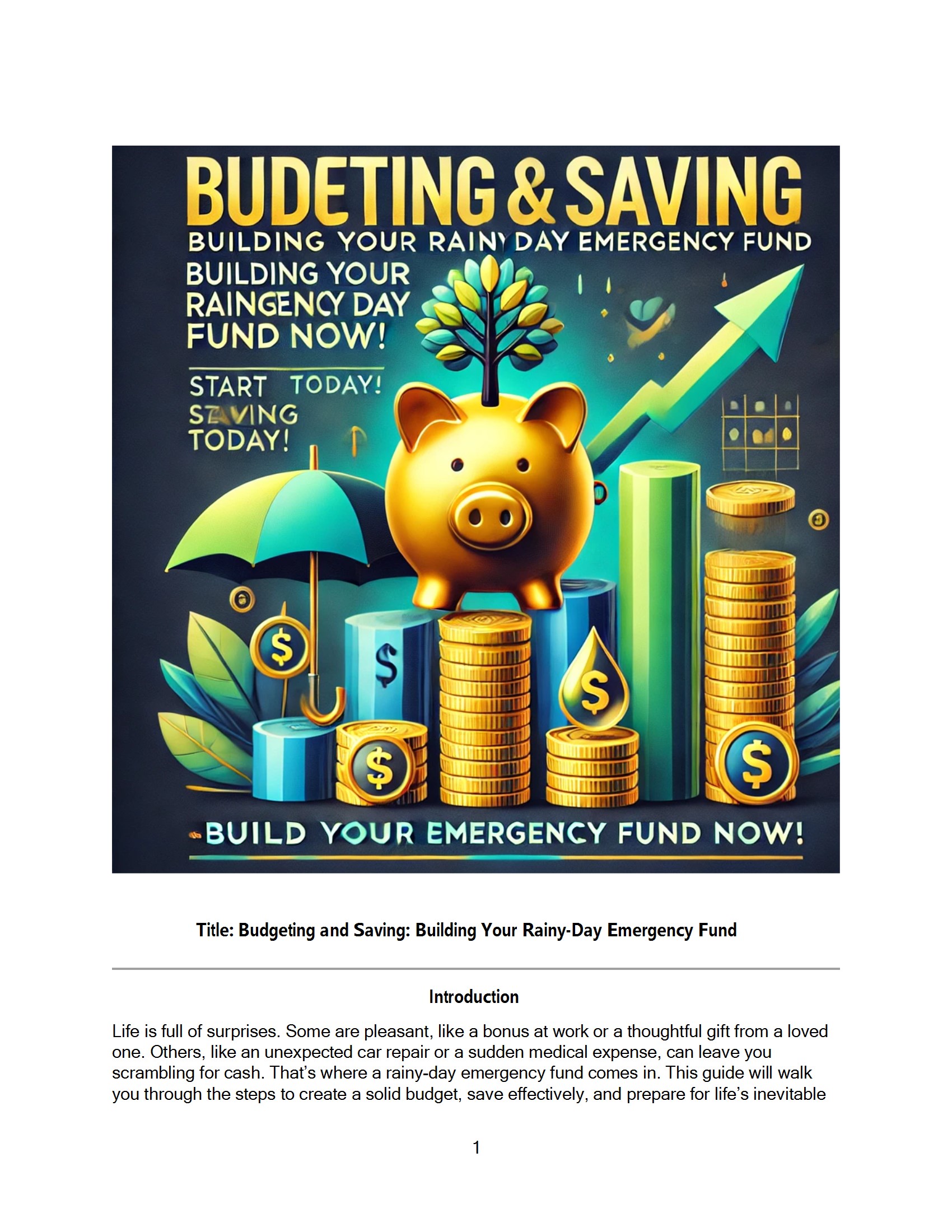
Discover timeless elegance at exclusive discounts!

Budgeting and Saving Building Your Rainy-Day Emergency Fund_Jan 26 2025.
Financial Resilience: A Strategic Guide to Building Your Emergency Savings Fund.
$24.99$19.99
In today's unpredictable economic climate, establishing a robust emergency fund is not just prudent financial planning - it's an essential safety net that provides stability during life's unexpected challenges. An emergency fund serves as your first line of defense against unforeseen expenses such as medical emergencies, sudden job loss, or urgent home repairs, preventing the need for high-interest debt. Financial experts universally recommend maintaining three to six months' worth of living expenses in liquid savings, though the ideal amount varies based on individual circumstances and risk tolerance. This financial buffer allows you to weather storms without derailing your long-term financial goals or dipping into retirement accounts, which often carry penalties for early withdrawal.
Building an emergency fund begins with a thorough assessment of your monthly expenses, including both fixed costs and variable spending. Create a detailed budget that accounts for housing, utilities, groceries, transportation, insurance, and minimum debt payments to determine your baseline needs. Many financial planners suggest starting with a modest initial goal, such as $1,000, before working toward the full three-to-six month target. This approach makes the process less daunting while still providing meaningful protection against minor emergencies. Automating transfers to a dedicated high-yield savings account can help ensure consistent contributions while earning modest interest on your growing balance.
Strategic budgeting techniques can accelerate your emergency fund growth without dramatically impacting your lifestyle. The 50/30/20 rule - allocating 50% of income to needs, 30% to wants, and 20% to savings - provides a helpful framework for balancing current needs with future security. Temporary measures like reducing discretionary spending, negotiating recurring bills, or taking on side work can provide extra funds to jumpstart your savings. Windfalls such as tax refunds, bonuses, or cash gifts should be prioritized for your emergency fund before considering other uses. Remember that consistency matters more than contribution size - even small, regular deposits will compound into meaningful protection over time.
The psychology behind emergency savings is as important as the financial mechanics. Many individuals struggle to save because they view it as deprivation rather than empowerment. Reframing your perspective to see emergency savings as "self-insurance" or "peace of mind money" can increase motivation. Financial advisors recommend keeping emergency funds separate from regular checking accounts to reduce temptation, while still maintaining liquidity for true emergencies. Digital tools like savings apps, automatic transfers, and visual progress trackers can help maintain focus and celebrate milestones. As your fund grows, so does your financial confidence - creating a virtuous cycle of improved money management.
Once your emergency fund reaches its target, maintaining its value becomes an ongoing financial priority. Regular reviews should account for inflation, lifestyle changes, or increased responsibilities that may require adjusting your target amount. Consider laddering your emergency savings with portions in different instruments - keeping immediate needs in cash while potentially earning higher yields on portions you could access within 30-90 days. Remember that using emergency funds should be reserved for genuine crises, with a plan to replenish any withdrawals promptly. Ultimately, a well-funded emergency account represents more than just money in the bank - it's the foundation of financial security that allows you to pursue other goals with confidence and resilience.
Rose of Sharon Online Store LLC
Timeless products inspired by faith and heritage.
The logo and brand identity of the "Rose of Sharon Online Store" present a captivating minimalist rose icon delicately intertwined with a cross, beautifully rendered in a soft rose gold and cream color palette. Beneath this elegant symbol, the store's name is displayed in refined serif typography, enhanced by a subtle glow effect that adds a touch of luxury. The digital product mockups showcase a smartphone featuring a playlist titled "Rose of Sharon Worship Vol. 2," set against a pastel pink background adorned with a floral border. Nearby, headphones rest on an open Bible, creating an inviting atmosphere. Additionally, a flat lay of a digital tablet reveals a delightful "Faith Florals" coloring book page, surrounded by vibrant colored pencils, dried roses, and a steaming cup of tea, all bathed in a soft sunlight filter that evokes tranquility and inspiration.
Grace
Purpose
1-804-571-1334
© 2025. All rights reserved.
